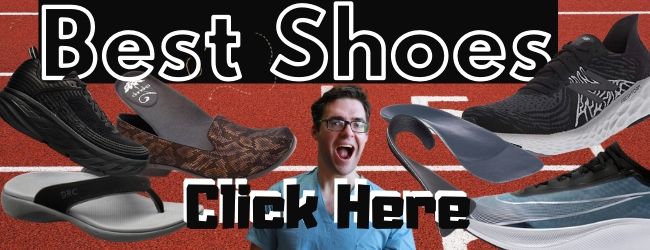Is Flat Foot Surgery Worth It? [Recovery Time, Surgery & Treatment]
Is flat foot Surgery Worth It? Make sure you get the 100% best results! The results can range from 70-95% satisfaction based on the flat foot procedure.
Look:
- Flat foot pain can be improved with a few simple treatment changes.
- We are foot doctors & we see this problem get better almost every day.
- The goal is to solve this problem without medication or surgery if possible.
So, let’s GO!
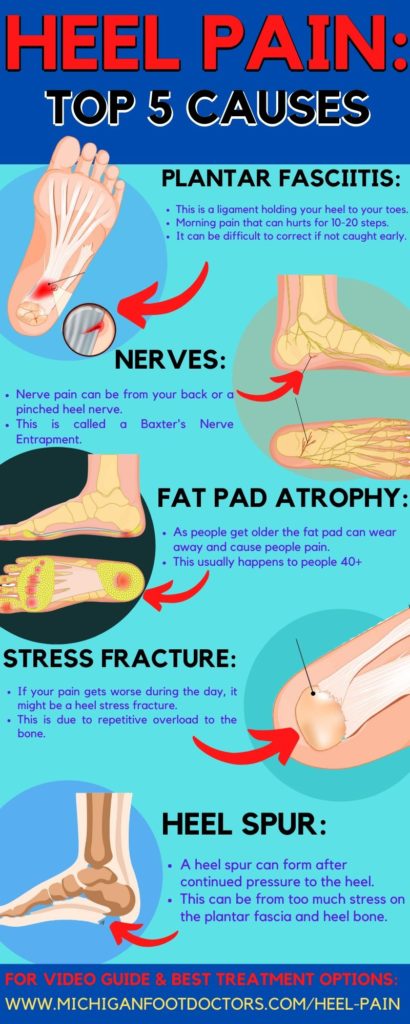
Table of Contents
Heel Pain Causes: Picture & Photo Gallery
Look:
- One of the top causes of heel pain is plantar fasciitis. This is damage to a ligament that holds your heel to your toes.
- Another root cause of heel pain has flat feet.
- There are also photos of heel spurs that can occur to the bottom of your heel (plantar fascia insertion) and the back of your heel (Achilles tendon insertion).
- Baxter’s nerve entrapment can also happen at the bottom of the heel.
- An underlying cause is an overpronated flatfoot or an over a supinated high arched foot.
- A plantar fibroma is a thick nodule that can occur within your plantar fascia ligament and contribute to plantar fasciitis.
- This can lead to the formation of a heel stress fracture( AKA calcaneus stress fracture.)
Please click on the gallery for a guided tour through heel pain conditions!
Is flat foot surgery worth it?
- Flat foot surgery is very good at correcting obvious deformity and pain.
- The results are extremely the effective.
- Where the surgery is not effective is when you attempt to fix a cosmetic or non-painful defect in your foot.
- This is not a cure for extensive weight gain or wanting to wear six inch heels.
Flat foot surgery is worth it when:
Flat Foot Surgery Pros:
- Obvious deformity.
- Collapse of the foot.
- Inability to wear orthotics.
- Inability to wear supportive shoes.
- Cannot stand or walk for even short periods of time.
- If you are otherwise healthy.
- If you have no major medical concerns.
- If you have realistic expectations, this means wearing good supportive shoes and orthotics in the future.
- If you are willing to wear a brace or supportive shoes in the future.
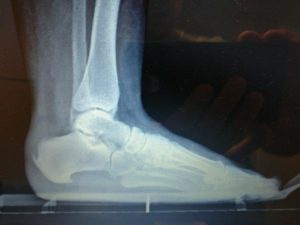
Flat foot surgery is NOT worth it when:
Flat foot surgery Cons:
- If you do not have severe pain.
- If you are only doing it for cosmetic purposes.
- If you do not have realistic goals.
- If you are extremely overweight and do not plan on wearing supportive shoes or orthotics in the future.
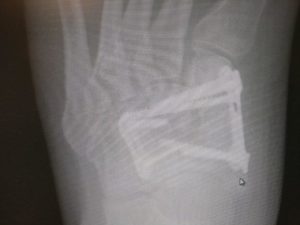
Flat Foot Surgery Before and After:
- This is a picture of flat foot surgery before and after pictures.
- Coming soon!
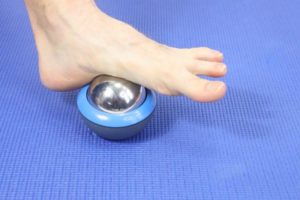
Flat Foot Surgery Recovery Time:
The day of the surgery:
- Your foot will be numb for about 24 hours, then you will have to start taking some pain medication and relax for a week.
- You will be sent home from the hospital that day, once you are feeling comfortable.
- You will receive a walker, crutches and pain medication
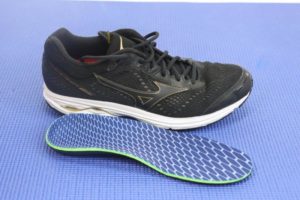

Instructions to speed up Flat Foot Surgery Recovery Time:
- Keep your foot elevated to minimize any possible swelling. This does help with pain.
- You will see physical therapy once the sutures are removed.
- Move around and put pressure only on the foot when you need to. Example: going to the bathroom.
- Your dressing is to stay clean dry and in place, until changed by the Podiatrist.
- Avoid smoking and taking anti-inflammatory medications as this may delay or even prevent the bones from fusing together
Flat Foot Healing Time:
Everyone differs, but this is the general followup schedule.
Two weeks:
- Incision will be checked, X-rayed and you will be fitted with a new plaster cast or boot
Six weeks:
- Foot and ankle will be X-rayed and the cast removed. You will be given an insole or brace (support) to put in your shoe
- You can start to walk around this time.
Three months :
- follow-up appointment and review
- Transition to a shoe at this time.
Six months:
- final appointment and discharge
- Close to final results now.
Flat Foot Surgery Recovery Time:
Depending on the procedures chosen by your podiatrist and your overall health, the recovery time may differ. At the quickest end of the spectrum you are walking immediately and back into a pair of shoes by 2-3 weeks. At the longer end of the spectrum, it may me a full 6-8 weeks in a cast.
0-2 weeks:
- Fiberglass cast cast and be non-weight bearing with a walker or crutches.
2-6 weeks :
- Transitioning from a cast to a removal boot and be minimal-weight bearing with crutches or a walker.
6-12 weeks:
- Most by this time will be weight-bearing in good supportive tennis shoes with an insole or brace.
12+ weeks :
- You should be able to wear your own shoes
- Physiotherapy and rehabilitation
Flat Foot Surgery Cost:
- Flat foot surgery cost is not considered a cosmetic procedure.
- It has been proven to be just as essential as a knee of a hip replacement.
- This is almost always a covered benefit with any major insurance plans.
- Once you have met your co-pay requirements this will be a covered benefit.
- Check with your podiatrist’s office to get specific details.
Surgery for Flat Feet in Adults:
- Surgery for flat feet in adults usually requires more bone orientated procedures.
- If the foot is not flexibile, fusion or bone procedure might be required.
- If the foot is flexible, the healing time is usually quicker and you are walking sooner.
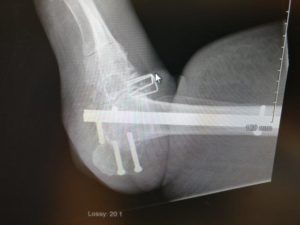
Surgery for Flat Feet in Children:
- Surgery for flat feet in children should only be considered in extreme deformity.
- We prefer not to do surgery on someone under 18 unless it is a severe deformity.
- This would mean extreme or unusual pain beyond a normal range.
- This would also a deformity like clubfoot.
Flat foot correction surgery:
- Flat foot correction surgery is overall considered a very proven and beneficial procedure.
Non-Surgery For Flat Foot Correction:
- Consider the following treatments before seeking surgery.
- These are some possible good products for your situation, but if concerned, check with your podiatrist!
Best Flat Foot Home Treatment:
- There are usually two phases to bottom of the foot pain treatment.
- The two phases of treatment include controlling the acute inflammation, and correcting the biomechanics which led to the problem in the first place.
- If the tendons and ligaments are inflammed, they are almost frozen in place and cannot function properly.
- Once the inflammation is decreased, we need to correct the biomechanical causes to ensure that they can never become over worked and inflammed again!
- This doesn’t matter whether it’s plantar fasciitis, plantar fibroma, sore bottom of foot, or even Achilles tendon pain. Treatment is all roughly very similar.
Removing The Stress:
- The key is to prevent future pain.
- If you can get rid of the pain and swelling, this will let you start walking normally.
- If you can walk normally, the vast majority of your pain should gradually start to go away.
- The best way to ensure that your plantar fascia, foot and ankle ligaments are not overworked is to support them.
- The best way to support them is to use great orthotics and great shoes.
- Some people may also need to rely on supportive ankle braces and other supportive modalities.
Best Flat Foot Shoes:
- Getting a great supportive pair of shoes will make sure that there is pressure removed from the heel and plantar fascia region.
- This is especially important if you have plantar fasciitis, heel spur pain or Achilles tendonitis.
- Consider shoes combined with a good supportive orthotic for best pain relief!
- The following link will show you what our favorites are.
Best Flat Foot Orthotics:
- These are our recommended orthotics.
- There are different types for different shoes.
- Women’s shoes usually need a less bulky orthotic, but allow for less correction.
- A full length orthotic requires a running shoe, boot or comfortable walking/dress shoe.
- We recommend doing everything you can to get a good supportive shoe that can fit a full length orthotic.
- This is the best way to maximize your orthotics for great results.
Best Full Length Orthotics:
- These will only work in wider shoes or a good supportive running shoe.
- This will not work in sandals, flats or most women’s dress shoes.








Best Dress Shoe Orthotics:
- These are a great choice for dress orthotics.






Best 3/4 Length Orthotics:
- These are great options for women’s dress shoes and thinner shoes.
- These are not the most supportive pair of orthotics.


Get A Great Dynamic Stretch:
- It is possible to stretch on your own, but these products can also really help!
- This will take pressure off of the ball of your foot.
- We personally prefer this method of stretching.








Get A Great Static Stretch:
- These devices are great for stretching while you are resting.
- This will also help take pressure off of the ball of your foot.
- This works great for plantar fasciitis.
- It can be used while watching TV or at night time.






Control Inflammation:
Massage & Ice Products:
- Ice is the an excellent option that can be safe for almost everyone.
- There is some debate whether icing is worth doing, but for chronic pain this can help limit the need for medications and keep your options open.
- This works great for your arch, less for the ball of the foot.
- The more muscle and ligament tissue there is, the better ice will work there.






Menthol Based Gels:
- Biofreeze is one of our favorites.
- These gels have been studied to work 2x as long as ice.
- This works great for the ball of the foot.
- This can be very effective for bottom of the heel and Achilles tendon sore regions.








Massage Sticks:
- These can work great for loosening your muscles.
- This allows less tightness and pressure on the ball of your foot.
- This is very effective for the arch, the gastrocnemius or calf muscle and for the hamstring and thigh muscles.
- This also works very well for the gluteus muscles if you are having butt cheek or hip pain.






